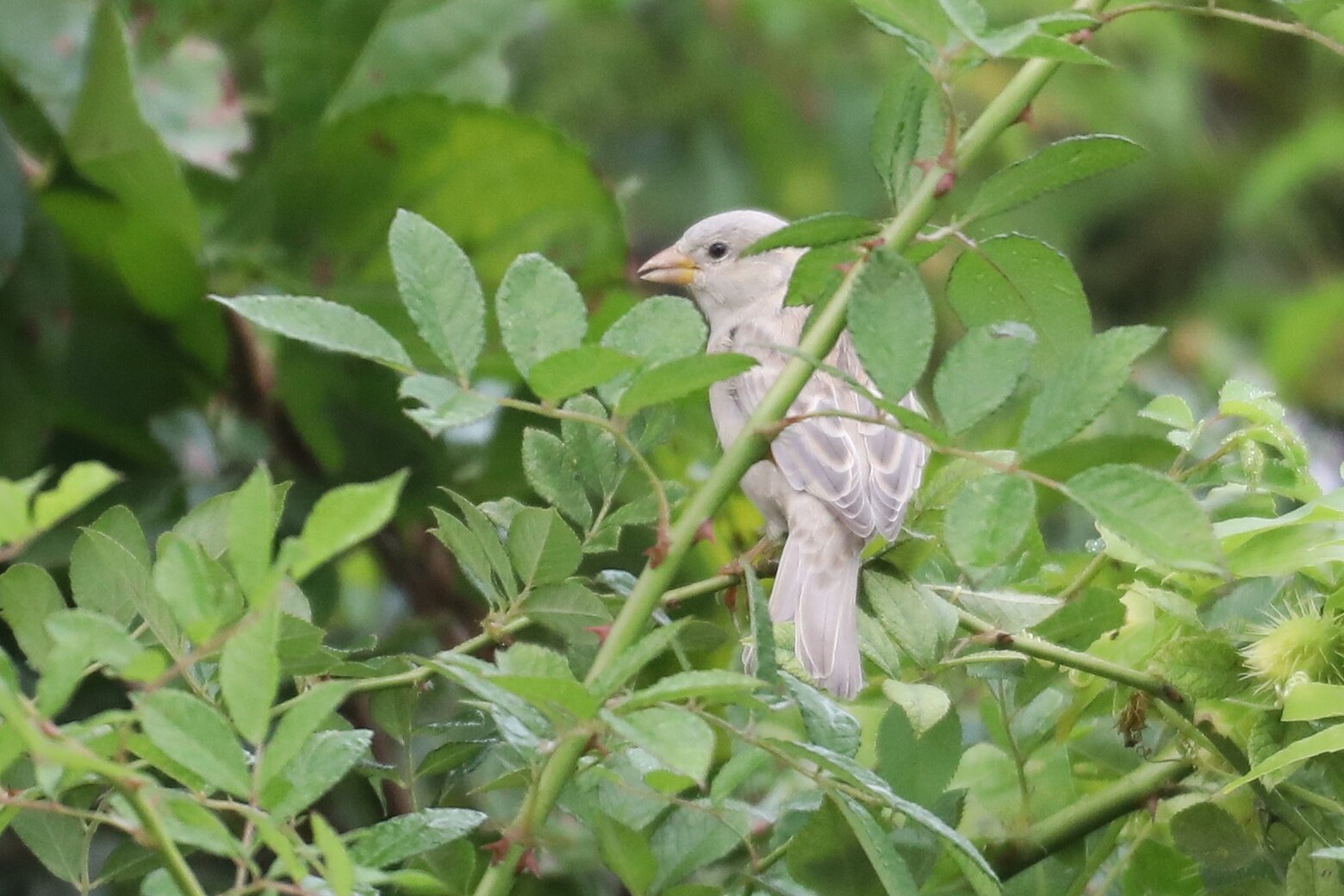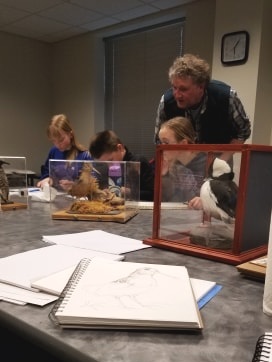by Marion Sprague
On Jan 1st MYBC set out on our Annual Christmas Bird Count for the Biddeford/Kennebunk CBC! Our crew consisted of 2 MYBC Teams and 1 additional team: MYBC Team 1 OOB- 6 birders—4 young birders and 2 adults; MYBC Team 2 Outlying Areas of Section 1— 2 young birders and 1 adult; and Team 3—MYBC founder Nathan Hall tackled on his own. They say there is no bad weather, just bad clothing. Team 1, since we were 100% on foot, opted not to test that old axiom too hard, and ended at 11AM before the rain really set in. The other 2 teams continued into the afternoon switching between car and on-foot.
MYBC Team 1 met up at the Old Orchard Beach Pier where we picked up a Northern Harrier. We got quick looks at it zoomed past, but enough to pick out it’s white rump patch and confirm our id. We then proceeded to bird along the beach. We picked up several Common Loons, 2 Red-throated Loons Long-tailed Ducks, and Black, and White-Winged scoters.
The highlight of the early part of the day was a flock of over 120 Sanderlings! We spotted them pretty far down the beach and managed to get them in our scope. As we proceeded down the beach they lifted off a few times, eventually landing on either side of our group within feet of us! We watched them play with the surf, running up and down the beach to avoid the wavs. It was a special moment being that close to a part of nature and we paused to soak it all in.
Our journey next brought us to the marsh at Goosefare Brook. Were we expected to pick up Canada Geese, Mallards and American Black Ducks. We got the ducks, but there was nary a goose in sight—a first for this MYBC CBC count!
Our final stop as a group before disbanding for the day was Veteran’s Memorial Park. Here we took advantage of the gazebo to finish our tally before disbanding.
MYBC Team 2 covered Guild Park, Oceanwood Camp, and Dune Grass. They picked up Carolina Wren and Golden-crowned Kinglet!
In total we counted 28 different species seen on the count day. MYBC had a lot of fun (despite the weather)and can’t wait to participate next year!
For the overall Biddeford/Kennebunkport CBC tallies: Total species 73, Total birds 10,346, Plus 3 CW species. This was the lowest number of species and second lowest number of birds found for the last 10 years. The rain and fog made the birding difficult. We did have a new species added this year, an Osprey found on River Rd in Biddeford, the north area of section 1. There were high counts again this year for Bald Eagle and Carolina Wren. We also had high counts for Sanderling and Ring-billed Gulls. We had only 3 Purple Sandpipers where we usually have 100+, sea bird counts were low, and we had a new low for American Tree Sparrow. There were no northern finches.
Stay-tuned for the February 2022 Trip Announcement coming soon!
See MYBC Team 1- OOB checklist here:
https://ebird.org/me/checklist/S99823636
See MYBC Team 2 checklists here:
Oceanwood: https://ebird.org/checklist/S99828413
Guild Park: https://ebird.org/checklist/S99839816
Guild Park (surrounding streets): https://ebird.org/checklist/S99842185
Dune Grass: https://ebird.org/checklist/S99862275











































































































































